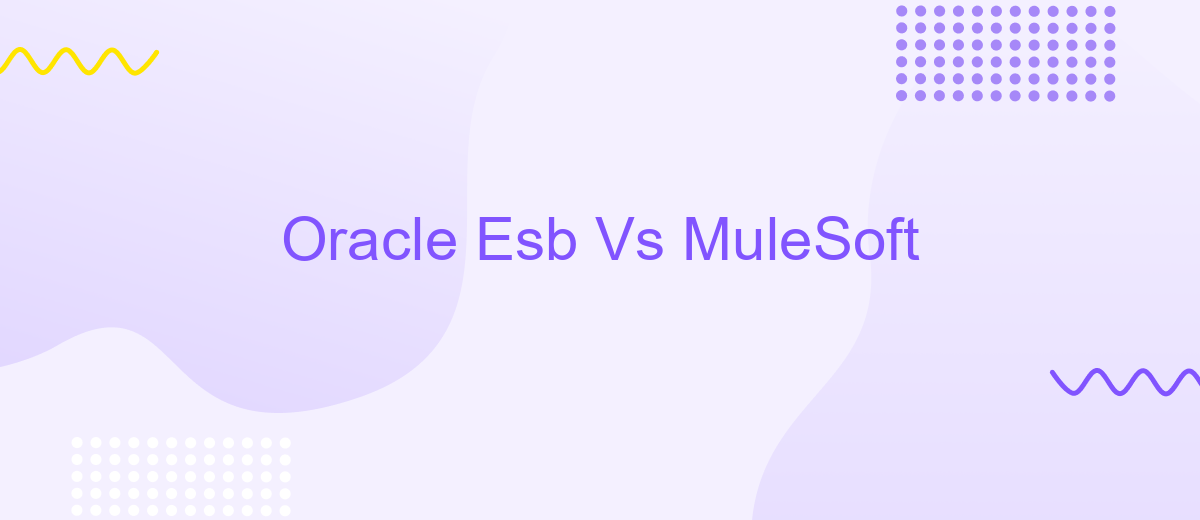Oracle Esb Vs MuleSoft
When it comes to integrating diverse systems and applications, choosing the right Enterprise Service Bus (ESB) is crucial. Oracle ESB and MuleSoft are two prominent players in this domain, each offering unique features and capabilities. This article delves into a comparative analysis of Oracle ESB and MuleSoft, helping you understand their strengths, weaknesses, and suitability for different business needs.
Introduction
In the modern digital landscape, businesses increasingly rely on integration platforms to streamline their operations and enhance connectivity between diverse systems. Oracle ESB and MuleSoft are two prominent players in this space, each offering unique features and capabilities. Understanding the differences between these platforms is essential for organizations looking to optimize their integration strategies.
- Oracle ESB: Known for its robust enterprise service bus capabilities, Oracle ESB excels in complex, large-scale integrations.
- MuleSoft: Renowned for its flexibility and API management, MuleSoft provides a comprehensive solution for connecting applications, data, and devices.
- ApiX-Drive: A versatile tool that simplifies the integration process, making it accessible even for non-technical users.
Choosing the right integration platform depends on various factors, including the complexity of your integration needs, budget, and technical expertise. This article will delve into the key features, benefits, and drawbacks of Oracle ESB and MuleSoft, helping you make an informed decision. Additionally, we'll explore how tools like ApiX-Drive can complement these platforms by offering user-friendly integration solutions.
Architecture and Features

Oracle ESB and MuleSoft are two prominent players in the enterprise service bus (ESB) domain, each offering unique architectural advantages and features. Oracle ESB is built on a robust, scalable architecture that integrates seamlessly with Oracle’s suite of applications. It supports a wide range of protocols and standards, providing a flexible environment for enterprise integration. Key features include comprehensive monitoring, fault tolerance, and extensive support for web services, making it a reliable choice for large-scale enterprises.
MuleSoft, on the other hand, offers a lightweight, highly scalable architecture designed for modern cloud and on-premise integration needs. Its Anypoint Platform provides a unified solution for API management, design, and analytics, facilitating seamless connectivity between various applications and services. MuleSoft's key features include a rich set of connectors, advanced data transformation capabilities, and a user-friendly interface that simplifies integration tasks. For businesses looking to streamline their integration processes, services like ApiX-Drive can complement MuleSoft by automating data transfer and synchronization between different systems, further enhancing operational efficiency.
Integration Capabilities

When comparing Oracle ESB and MuleSoft, it is essential to consider their integration capabilities. Both platforms offer robust tools for connecting various systems, applications, and services, but they differ in their approach and features.
- Oracle ESB provides a comprehensive suite of tools for enterprise application integration, including support for various protocols and standards such as SOAP, REST, and JMS. It also offers advanced orchestration and transformation capabilities.
- MuleSoft, on the other hand, is known for its Anypoint Platform, which provides a unified solution for API management, design, and integration. MuleSoft supports a wide range of connectors and pre-built templates, making it easier to integrate with popular applications and services.
- For those seeking an additional layer of integration simplicity, services like ApiX-Drive can be beneficial. ApiX-Drive allows users to automate data transfer between different systems without requiring extensive coding knowledge, thus complementing the capabilities of both Oracle ESB and MuleSoft.
In summary, while Oracle ESB excels in providing a robust enterprise-level integration solution, MuleSoft offers a more flexible and user-friendly platform. Supplementing these with ApiX-Drive can further enhance integration efficiency and reduce the complexity of managing multiple systems.
Performance and Scalability

When comparing Oracle ESB and MuleSoft in terms of performance and scalability, both platforms offer robust solutions, but there are distinct differences. Oracle ESB is known for its enterprise-level capabilities and strong integration with other Oracle products, providing high performance for complex enterprise environments.
MuleSoft, on the other hand, offers a more flexible and scalable solution that can easily adapt to various business needs. Its lightweight architecture and cloud-native capabilities make it ideal for modern, distributed applications that require high scalability.
- Oracle ESB: Optimized for large-scale, complex integrations.
- MuleSoft: Flexible and scalable, suitable for cloud-native environments.
- ApiX-Drive: Simplifies the setup of integrations, enhancing performance and scalability.
For businesses looking to streamline their integration processes, using a service like ApiX-Drive can be beneficial. It simplifies the setup and management of integrations, allowing companies to focus on performance and scalability without getting bogged down by complex configurations. This makes it an excellent complement to both Oracle ESB and MuleSoft.
Cost and Support
When comparing the cost of Oracle ESB and MuleSoft, it's essential to consider both the initial investment and the long-term expenses. Oracle ESB typically requires a higher upfront cost due to licensing fees and the need for specialized hardware. On the other hand, MuleSoft offers a more flexible pricing model, including subscription-based options that can be more cost-effective for smaller businesses. Additionally, MuleSoft's cloud-based infrastructure can reduce the need for extensive on-premises hardware, further lowering overall costs.
Support is another crucial factor to consider. Oracle ESB provides robust support options, including 24/7 customer service and extensive documentation. However, the complexity of the system often necessitates specialized expertise, which can add to the overall cost. MuleSoft, conversely, offers a comprehensive support package that includes community forums, training resources, and dedicated support plans. For businesses looking to streamline their integration processes, services like ApiX-Drive can offer additional support and automation capabilities, making it easier to manage and maintain integrations across various platforms.


FAQ
What are the main differences between Oracle ESB and MuleSoft?
Which platform has better cloud integration capabilities?
Can both Oracle ESB and MuleSoft handle real-time data integration?
How do Oracle ESB and MuleSoft compare in terms of ease of use?
Are there any third-party services that can help with the integration and automation setup for these platforms?
Time is the most valuable resource for business today. Almost half of it is wasted on routine tasks. Your employees are constantly forced to perform monotonous tasks that are difficult to classify as important and specialized. You can leave everything as it is by hiring additional employees, or you can automate most of the business processes using the ApiX-Drive online connector to get rid of unnecessary time and money expenses once and for all. The choice is yours!

